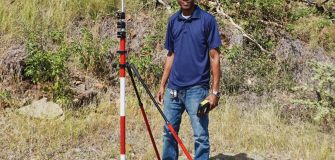Share
In May 2002, the World Health Organization (WHO) was requested by the Member States to develop a Global Strategy on Diet, Physical Activity and Health in the context of the rising burden of chronic diseases. A recent WHO/FAO expert consultation report on diet, nutrition and prevention of chronic diseases, sets population nutrient goals and recommends intake of a minimum of 400 g of fruits and vegetables per day for the prevention of chronic diseases such as heart diseases, cancer, diabetes and obesity.
The World Farmers’ Organisation (WFO), recognizing the importance of women farmers, advocates for recognition of their role in agriculture. According to FAO estimates, women are responsible for more than 50% of food production worldwide. This includes up to 80% of food production in African countries, 60% in Asia, and between 30% and 40% in South America. Global trends have seen a recent increase in female-headed households along with female-headed farms.
In recognition of the ever increasing role of women in the agricultural work place, the World Bank has made gender equity in the agriculture and food sector a specific goal, and is working to expand women’s access to land and rural financing.
In 2016 in the US, where many small farms are managed by women, the government initiated ‘Feed the Future’, a program aimed to reduce global hunger and increase food-security initiatives. In that same year, the program assisted 2.4 million women to improve their agriculture and food-security related skills, also helping more than 420,000 women gain access to agriculture-related credit.
Like their male counterparts, women on the farm wear a lot of hats. They are primary operator, mother, wife, salesperson, yet, often, their safety and health needs are not adequately met. This present day affinity of women for agriculture is believed to be part of our evolutionary programming, which evolved into men being hunters, while women became gatherers and foragers. This article looks at women in commercial farming, selling what they grow, and women in home gardening, feeding their families with what they grow.
Traditionally in the Virgin Islands commercial farming, back yard gardening and fishing provided fresh healthy food for the community. However, during the latter part of the twentieth century, the swing to tourism and the financial sector reduced input in the agriculture sector, and locally grown fruits and vegetables were replaced with imported fruits and vegetables.
Before the advent of the mega supermarkets in the Caribbean, every household in rural areas and in the suburbs kept a backyard garden, where fruit trees and vegetables grew side by side. It was not unusual to raise chickens and ducks as well, providing a source of protein for the traditional Sunday lunch. These family oriented meals slowly lost their appeal as our taste buds embraced prepackaged meals and fast food take-outs.
In 2017, the after effects of hurricane Irma resulted in our food security being seriously threatened. Furthermore, in recent times, controlling the COVID-19 pandemic has also caused a major loss of jobs in the tourism sector. This, coupled with continuing curfews in an effort to stem the spread of the virus, has once again placed our community under severe stress.
With time to spare and young children to manage, some families turned to gardening as an opportunity to reduce stress and provide an activity in which all members of the family could participate. It was heartwarming to see families, often led by the mother, shopping for gardening supplies. In fact, our regular garden suppliers were soon short of basic gardening supplies as many people returned to growing vegetables. A well maintained organic backyard can provide the daily requirements for green vegetables, with extra to share with family and friends.
This article hopes to promote a healthy lifestyle through home gardening, and to stress the psychological and physical health benefits that are derived from working outdoors. As persons share their produce and their gardening experience with others, it can start a chain reaction, inspiring others to also grow their own food. Engaging youth and younger children to start their own gardens sets the groundwork for fostering a sustainable, active, and healthy lifestyle. Studies have shown that a combination of regular physical exercise and a healthy diet not only can improve the personal health of an individual, but may also have positive long term effects on the environment.
The greatest challenges of the 21st century are the increasing demand on food, water and energy from a growing population, and the subsequent effects on climate change. According to a World Health Report 2003, the low consumption of fruits and vegetables is among the top 10 risk factors contributing to early mortality.
Recent research has shown that gardening reduces stress, induces calmness and promotes relaxation. A study by researchers in the Netherlands found that gardening may reduce the stress hormone: cortisol, in the brain. Scientists say that high levels of cortisol in the body interfere with learning and memory. It can also increase a person’s weight, blood pressure and cholesterol levels. The intensive work required in the garden utilizes all your muscles, burns calories and provides a good physical workout.
Gardening is a fun and relaxing way to get in touch with nature while enjoying many health benefits. According to the American Centers for Disease Control and Prevention, just 2.5 hours of moderate activity each week can help reduce the risk of many health problems, including heart disease, stroke, high blood pressure and Type 2 diabetes.
In a 2014 research review, analysts found that horticultural therapy, which is using gardening to improve mental health, may be an effective treatment for people with dementia. In the Netherlands and Norway, people with dementia spend part of their day working on farms and in gardens as part of their therapy.
Gardening provides the opportunity for daily exercise, growing healthy food, and beautifying your space. Getting dirty and eating clean are good for you. As we watch the changes in our world and the struggle to save lives by adhering to safe health guidelines, it is necessary to seize the opportunity to join the trend, being part of the solution to provide safe healthy food for our families. As our government seeks to address the issue of food security and sustainability with the Proposed Virgin Islands Food Security and Sustainability Act, we need to do our part to contribute to the solution for our community.
This article was written based on information from the internet and the author’s many years of gardening experience.



